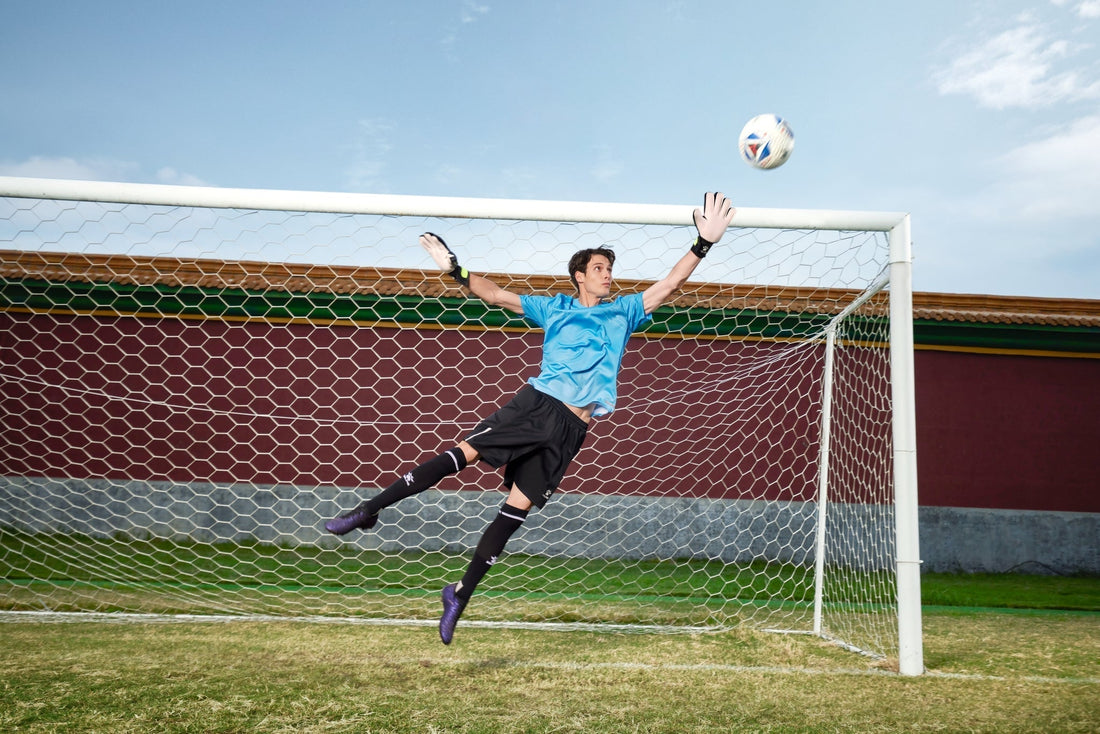
Goalkeeper Glove Size Guide: How to find the right fit?
Share
 Goalkeeper Glove Size Guide: How to find the right fit
Goalkeeper Glove Size Guide: How to find the right fit
When you're the one standing between the net and the scoreboard, every detail of your gear matters especially your gloves. Sure, grip and style are nice, but if your gloves don’t fit right, they’re not doing their job. Choosing the right goalkeeper glove size can differentiate between a confident save and a risky injury.
And we’re not just discussing the comfort of wearing soccer gloves here. We’re talking hand protection, wrist stability, and long-term performance.
Whether you're stopping shots in your backyard, on the training pitch, or in a competitive league match, glove fit isn’t something to guess.
Let’s walk through how to measure your hands, how sizing changes between youth and adults, and why a good fit is your best defense.
Why Glove Fit Isn’t Just About Comfort, It’s About Safety
Think about the kind of impact your hands take in a game: point-blank shots, awkward deflections, collisions in the box. If your gloves are too loose, your fingers can jam or bend back. Too tight? You risk cutting off circulation or reducing flexibility, which slows your reaction time.
A properly sized goalkeeper glove:
- Reduces strain on your fingers and wrists during high-impact saves
- Prevents hyperextension (a common injury when gloves are too loose)
- Supports your grip so the ball doesn’t slip out in wet or high-pressure moments
- Keeps padding aligned so it protects the right areas on contact
Kelme’s gloves, for example, are designed with performance padding and wrist support, but they only work as intended when they’re snug and secure on your hands.
How to Measure Your Hands for Goalkeeper Gloves?
Getting the right size isn’t complicated, but it does require accuracy.
Here’s a quick method that most keepers (and coaches) swear by:
- Measure from the tip of your middle finger to the base of your palm.
- Round up to the nearest whole number.
- Add 1 inch to that number. That’s your glove size.
A good glove fit will feel like a natural extension of your hand, not just a piece of equipment.
Example:
If your hand measures 7.5 inches, round up to 8, then add 1 = Size 9.
Pro tip: Don’t forget to consider your hand shape and build. A tall goalkeeper with slender fingers might wear a different size than someone stockier with broader hands, even if the hand length is the same.
Youth vs. Adult Gloves: What Parents (and Young Keepers) Should Know
For younger goalkeepers, sizing can be tricky. Kids grow quickly, and their glove needs change from season to season. Last year’s pair might suddenly be way too tight — or worse, just slightly off in fit, leading to frustration during games.
Here’s what to keep in mind before buying gloves for your kid:
- If your child’s hand measures around 6 inches, start with a youth size 6.
- If they’re in a growth spurt, it’s okay to size up slightly—but not so much that the glove slides or bunches.
- Youth gloves are designed differently than adult gloves, with slimmer fits and softer padding to match younger hands.
Kelme’s youth gloves strike a solid balance: enough room to grow, but tight enough to stay functional and safe.
How to Know If Goalkeeper Gloves Fit Right?
Once you’ve got a pair in hand, here’s what to look for when trying them on:
✅ Snug across the fingers and backhand, but not restrictive
✅ Minimal space at the fingertips, no more than ¼ inch
✅ Full finger flex and range of motion
✅ Secure wrist closure for support, especially during dives or punches
If the gloves feel bulky or your fingers can move around too much inside, they’re too big. On the flip side, if you can’t fully extend your fingers or the material pulls uncomfortably when you do, they’re too small.
Remember: the goal is protection, not just fit. A glove that moves independently from your hand won’t protect your joints when it matters.
Bonus: Don’t Forget the Wrist Support
Wrist injuries are surprisingly common among goalkeepers. Whether it's a hard shot you parried awkwardly or a mistimed dive, the wrist takes a beating. That’s why integrated wrist straps or wraps are more than just a design feature, they're your wrist’s best friend.
Kelme gloves, for instance, offer adjustable wrist closures that lock the glove into place without cutting off circulation. You want a fit that feels secure, not suffocating.
Final Thoughts: The Right Gloves Make You a Safer, Smarter Keeper
The perfect glove isn’t just about making great saves, it’s about protecting your hands so you can keep playing, week after week.
Whether you're buying your first pair or upgrading to a better model, don’t settle for something that “kind of” fits. Your hands are your most valuable tools on the pitch. Treat them that way.
Need help figuring out your exact glove size? For more reference, you can view our Kelme Gloves or reach out to our Kelme Store, for a sizing recommendation. And when in doubt, always choose protection and fit overlooks. Style is great, but safe hands win games.